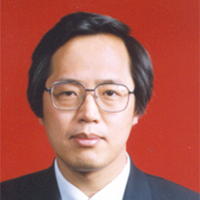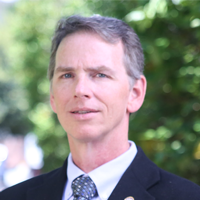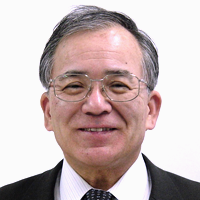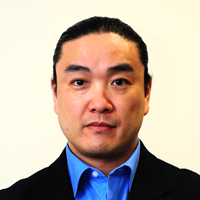SICE Annual Conference 2014, September 9 - 12, 2014 at Hokkaido University, Sapporo, Japan
Plenary talks
The following plenary talks will be provided in SICE2014
- Plenary talk 1
(Sep. 10) -
"Parametric Control Systems Design with Applications in Spacecraft Control"
Guang-Ren Duan, Harbin Institute of Technology - Plenary talk 2
(Sep. 11) -
"Precision Mapping and Vehicle State Estimation for Autonomous Highway Vehicles"
Jay A. Farrell, University of California, Riverside - Plenary talk 3
(Sep. 11) -
"Non-Contact Distance Metrology by Optical Comb for Industry and Society"
Hirokazu Matsumoto, Department of Precision Engineering, The University of Tokyo
/ TOKYO SEIMITSU Co., LTD, Director - Plenary talk 4
(Sep. 12) -
"Stable Manifold Method for Nonlinear Optimal Control"
Noboru Sakamoto, Nagoya University
Plenary talks Descriptions

|
Professor Guang-Ren Duan Center for Control Theory and Guidance Technology, Harbin Institute of Technology |
| Title: Parametric Control Systems Design with Applications in Spacecraft Control Abstract: A parametric approach for control systems design establishes a general parameterization of a set of controllers of certain type, which meet some dominant system design requirements, and meanwhile, provides all the design degrees of freedom which may be further utilized to modify some other closed-loop system performance. Due to these advantages, parametric control systems design approaches have played an important role in both theories and applications. In this talk, a general framework for a type of unified parametric approaches for control systems design is briefly introduced, which are based on general complete parametric solutions to a type of generalized Sylvester matrix equations. One of the key steps, i.e., finding the parameterization of the required type of controllers, is especially treated and emphasized. |
|
| Short Biography: Guang-Ren Duan received his BSc. degree in Applied Mathematics, and both his MSc and PhD degrees in Control Systems Theory. From 1989 to 1991, he was a post-doctoral researcher at Harbin Institute of Technology, where he became full professor of control systems theory in 1991. He visited the University of Hull, the University of Sheffield, and also the Queen's University of Belfast, UK, from December 1996 to October 2002. He was selected by the Cheung Kong Scholars Program of the Chinese government in August 2000, and elected in 2005 leader of a Cheung Kong Scholar Innovative Team sponsored by the Chinese Ministry of Education, and elected in 2009 leader of an Innovative Research Group sponsored by NSFC. He is the founder and currently the Director of the Center for Control Theory and Guidance Technology at Harbin Institute of Technology, and also Member of the Science and Technology committee of the Chinese Ministry of Education, Vice President of the Control Theory and Applications Committee, Chinese Association of Automation, and Associate Editors of a few international journals. Prof. Duan is the winner of the 4th Chinese National Youth Award of Science and Technology, and the Chinese National Award of Natural Sciences. He is also winner of the Over- century Talents Program of the Chinese Ministry of Education, and that of the Distinguished Young Scholars Program of NSFC (Natural Science Foundation of China). His main research interests include parametric robust control systems design, LMI-based control systems, descriptor systems, spacecraft control and magnetic bearing systems. He is the author and co-author of 5 books and over 200 SCI indexed publications, with more than 30 appeared in IEEE Transactions. | |

|
Professor Jay A. Farrell Department of Electrical Engineering (EE), the University of California, Riverside. |
| Title: Precision Mapping and Vehicle State Estimation for Autonomous Highway Vehicles Abstract: Given recently publicized demonstrations of autonomous vehicles operating on public streets, various countries are considering technical, legal, and ethical issues related to their legalization. Even without fully autonomy, intelligent transportation systems have high potential for improvement of highway safety and throughput, especially after gwhere-in-laneh accuracy can be reliably achieved. This presentation will discuss the role of control and systems theoretic methods related to practical autonomous vehicle applications, particularly as they relate to automated construction of precise feature maps and reliable real-time navigation with position accuracy at the decimeter level. Both applications require reliable and automated data fusion from various sensor modalities: LIDAR, camera, global navigation satellite systems, inertial measurements, etc. The presentation will survey and present modern methods for roadway feature mapping and vehicle state estimation. Results from a demonstration at the US Department of Transportation Turner Fairbanks Research Center will be included. |
|
| Short Biography: Jay A. Farrell earned B.S. degrees in physics and EE from Iowa State U., and M.S. and Ph.D. degrees in EE from the U. of Notre Dame. At Charles Stark Draper Lab (1989-1994), he received the Engineering Vice President's Best Technical Publication Award in 1990, and Recognition Awards for Outstanding Performance and Achievement in 1991 and 1993. He is a Professor and two time Chair of the Department of Electrical Engineering (EE) at the University of California, Riverside. He has served the IEEE Control Systems Society (CSS) as Finance Chair for three IEEE CDC's (`95, `01, and `03), on the Board of Governors for two terms (`03-`06, `12-`14), as Vice President Finance and Vice President of Technical Activities, as General Chair of IEEE CDC 2012, and as President in 2014. He was named a GNSS Leader to Watch for 2009-2010 by GPS World Magazine in May 2009 and a winner of the Connected Vehicle Technology Challenge by the U.S. Department of Transportation's (DOT's) Research and Innovative Technology Administration in July 2011. He is a Fellow of the IEEE, a Fellow of AAAS, a Distinguished Member of IEEE CSS, and author of over 200 technical publications. He is author of the book "Aided Navigation: GPS with High Rate Sensors" (McGraw-Hill 2008). He is also co-author of the books "The Global Positioning System and Inertial Navigation" (McGraw-Hill, 1998) and "Adaptive Approximation Based Control: Unifying Neural, Fuzzy and Traditional Adaptive Approximation Approaches" (John Wiley 2006). | |

|
Professor Hirokazu Matsumoto Director, TOKYO SEIMITSU Co., LTD. |
| Title: Non-Contact Distance Metrology by Optical Comb for Industry and Society Abstract: Recently, high accuracy and non-contact measurements are required for improving the products quality in industry and guarantee the safety in society. In this present, temporal coherence interferometry is developed using the optical comb which of repetition frequency is in general 100 MHz and is phase-locked to a rubidium clock standard of 10-11. Therefore, the interference fringe pattern is not fairy affected by the air turbulence and mechanical vibration. At first, fast optical comb whose repetition frequency is 15 GHz is developed using fiber Fabry-Perot etalon and so the repetition distance in space is exactly 10 mm. Then, the comb is applied to absolute distance measurement with an accuracy of 0.05 Êm. This technology has a possibility of measuring the distances up to hundreds meter. Next, it is applied for non-contact measurement of a coordinate measuring machine with 0.2 µm. This technology is also applied to the remote non-contact measurements of the huge-size objects such as airplane with a rough surface of Ra=1.6 µm. |
|
| Short Biography: 1976 PhD Graduate School of Engineering, The University of Tokyo, 1976 Research of precision measurement technology by laser interferometer, and Research on measurement technology of large size by infrared interferometer at National Research Laboratory of Metrology (NRLM). 1983 Research on measurement technology of long-distance by laser high-frequency modulation at U.S. National Bureau of Standards (Visiting Fellow) and Research of phase conjugate technology by non-linear crystal at the NRLM. 1991 Temporal lecturer at Faculty of Engineering, Kobe University. 1995 Research of advanced measurement technology by femtosecond pulse laser and Research Planning Officer at NRLM. 1997 Research of dimensional measurement technology by the low-coherence interference, and Research on standard quantum metrology. Research on advanced ultra-precision measurement and analysis technology using optical frequency comb at NRLM (Department Director). 1999 Tokyo University of Science Joint Graduate School Visiting Professor. 2001 Length metrology research, Development of broadband light synthesizer, Development of remote measurement technology using optical fiber, National Institute of Advanced Industrial Science and Technology (Vice Director), 2008 Traceability measurement engineering (optical comb metrology) at The University of Tokyo (Project Professor). 2013 Optical comb technology at Tokyoseimitsu, Co. Ltd. (Director). | |

|
Professor Noboru Sakamoto Associate Professor with the Department of Aerospace Engineering, Nagoya University, Japan. |
| Title: Stable Manifold Method for Nonlinear Optimal Control Abstract: Hamilton-Jacobi equations have been one of the serious impediments for the application of nonlinear control theory. Recently, a novel approach based on stable manifold theory for numerically solving Hamilton-Jacobi equations is developed. This approach is unique in that it obtains the derivative of the solution of Hamilton-Jacobi equations and is efficient in that it consists of successive computations which are suitable for computer implementation. We have developed a Matlab package that carries out the manifold computation and creates optimal feedback controllers. This computational package for optimal control has been applied for a number of real-world systems with experimental verifications. Those applications include pendulum swing up, aircraft control and control of mechatronic systems such as electric motors (AC and DC) and control moment gyros. In this talk, the general notion of invariant manifold of dynamical systems and its significance in nonlinear control design will be also discussed. |
|
| Short Biography: Noboru Sakamoto received the B.Sc. degree in mathematics from Hokkaido University and M.Sc. and Ph.D. degrees in aerospace engineering from Nagoya University, in 1991, 1993, and 1996, respectively. Currently, he is an Associate Professor with the Department of Aerospace Engineering, Nagoya University, Japan. He has held a visiting research position at University of Groningen, The Netherlands, in 2005 and 2006 via Scientists Exchange Program Fellowship by JSPS. He won the SICE Best Paper Prizes in 1997, 2006, 2008 and 2011. He is also a member of IFAC Technical Committee on Optimal Control. His research interests include nonlinear control theory, control of chaotic systems, dynamical system theory and control applications for aerospace and automobile industries. | |